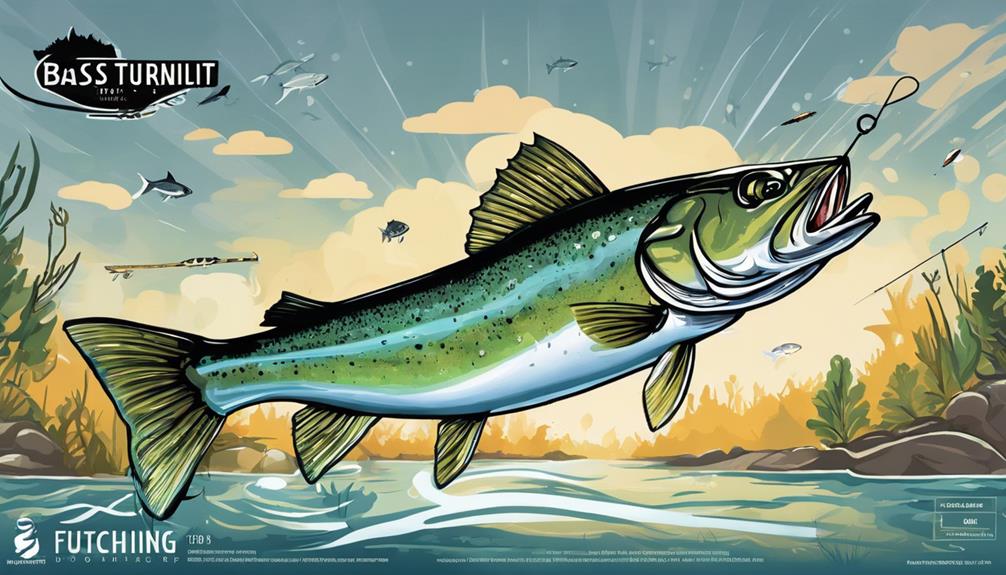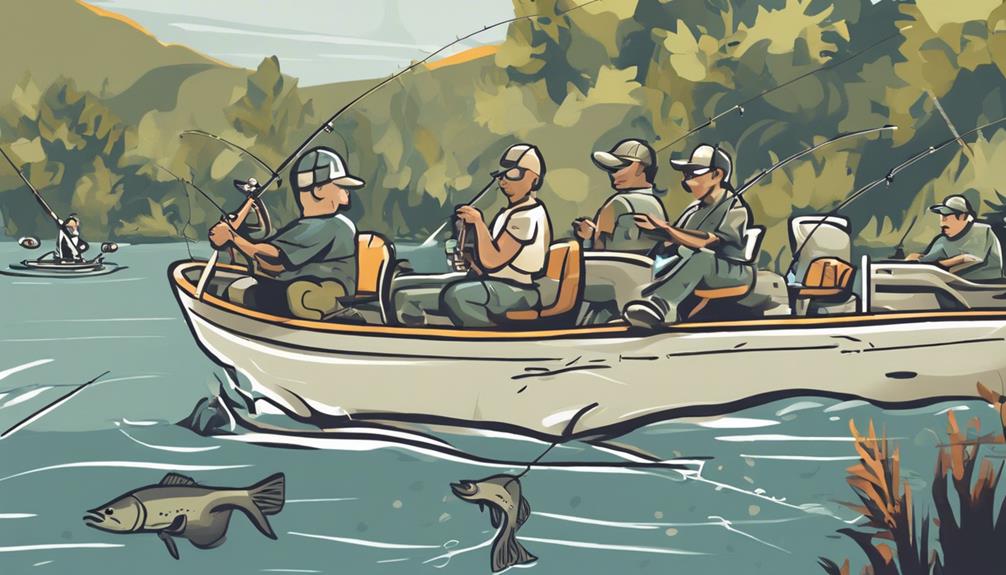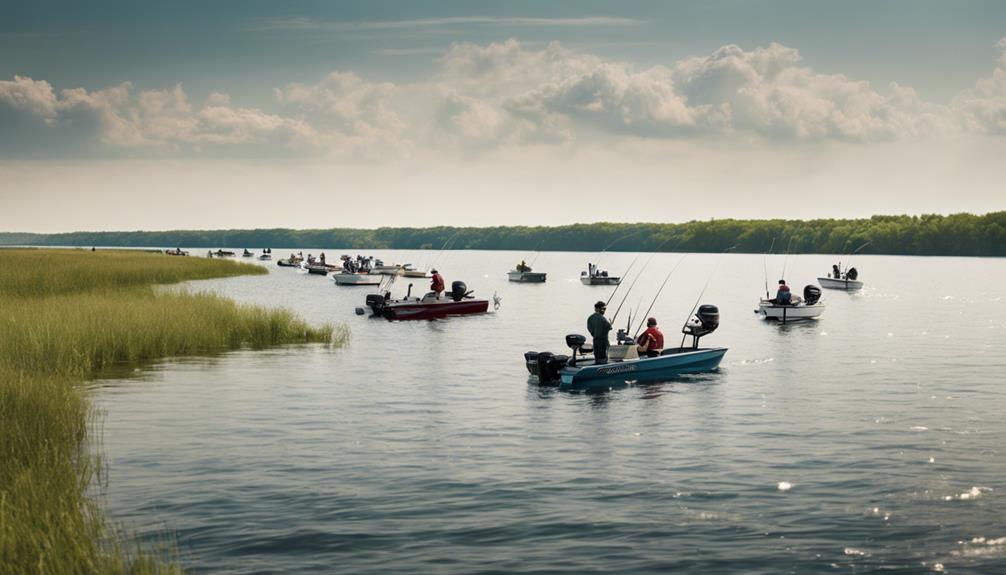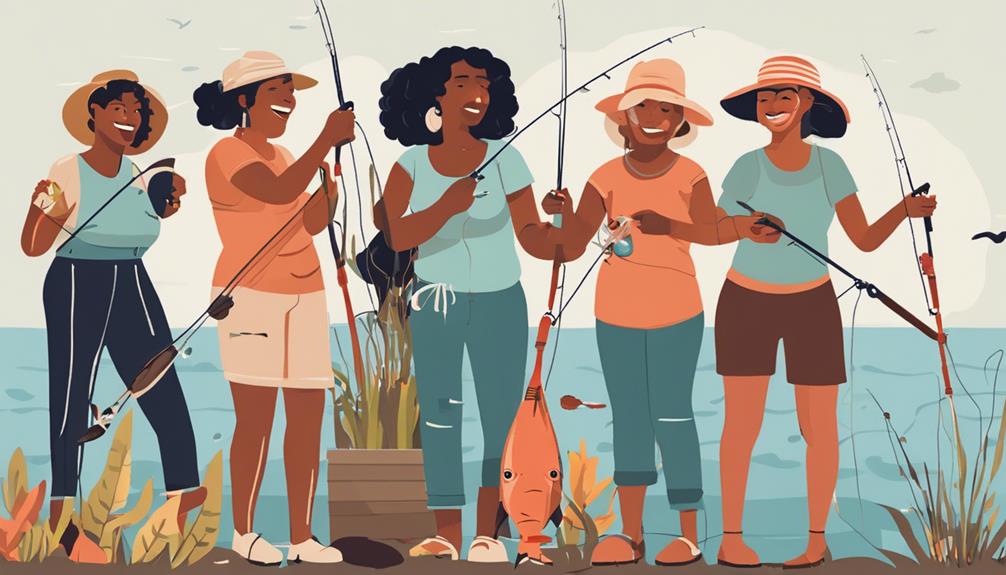In fishing tournaments, the variation by species is essential. Species selection affects competition dynamics, shaping rules and strategies. Behavioral traits, habitat preferences, and feeding patterns differ, influencing lure and bait choice. Regulations prevent overfishing, promoting conservation and sustainable practices. Understanding habitat and behavior differences enhances success. Equipment and techniques vary per species, impacting catch rates and competitive edge. Scoring systems can favor size or conservation. Local ecosystems influence fish distribution and vulnerability to fishing techniques. Tournaments hold cultural and historical significance, reflecting traditions and heritage. Exploring these aspects provides a deeper insight into the intricate world of fishing tournaments.
Importance of Target Species
Understanding the significance of targeting specific species in fishing tournaments is crucial for maximizing competition dynamics and promoting sustainable angling practices. When selecting a target species for a fishing tournament, organizers consider various factors such as the popularity of the species among anglers, the ecological impact of targeting that species, and the management status of the population. Target species play a pivotal role in shaping the rules and regulations of a fishing tournament, influencing the strategies employed by anglers, and determining the overall success and sustainability of the event.
In fishing tournaments, the choice of target species can greatly impact the level of competition and excitement among participants. Some species are known for their elusive nature, requiring skill and patience to catch, while others are more abundant and easier to target. By selecting specific target species, tournament organizers can create a balanced playing field that tests the anglers' abilities and knowledge of different fishing techniques. Additionally, focusing on certain species can help highlight the diversity of fish populations in a particular area, raising awareness about conservation efforts and the importance of preserving natural habitats.
Unique Characteristics of Each Species
To explore the unique characteristics of each species targeted in fishing tournaments, one must delve into the specific behavioral traits, habitat preferences, and feeding patterns that distinguish these fish from one another. Different species exhibit a range of adaptation strategies and survival tactics that have evolved over time to help them thrive in their respective environments. For example, predatory species like striped bass are known for their aggressive hunting behaviors, while bottom-dwelling species such as halibut rely on camouflage and ambush tactics to secure their prey.
Feeding habits play a crucial role in determining the success of anglers during fishing tournaments. Understanding the preferred prey of each species can help fishermen choose the most effective lures or bait. For instance, species like trout may have selective feeding habits, requiring anglers to use specific artificial flies or natural baits to entice them. In contrast, species like largemouth bass are known for their opportunistic feeding behavior, readily striking at a variety of artificial lures.
Reproductive cycles also influence the behavior of fish targeted in tournaments. Some species, such as salmon, exhibit complex migratory patterns driven by their reproductive instincts. Anglers often capitalize on these movements to target fish during critical stages of their life cycle. By considering these unique characteristics of each species, fishing tournaments can be tailored to maximize participation and showcase the diversity of fish populations in different ecosystems.
Regulations and Conservation Concerns
Regulations and conservation concerns surrounding fishing tournaments demand a balanced approach to sustainably manage fish populations and preserve aquatic ecosystems. Fishing tournaments can have a significant regulatory impact on fish populations and their habitats. Striking a balance between the excitement of competitive fishing and environmental stewardship is crucial to ensure the long-term health of fish stocks and their ecosystems.
Regulatory measures such as catch limits, size restrictions, and the use of specific gear aim to prevent overfishing and protect vulnerable species. These rules help maintain the delicate balance within aquatic ecosystems, ensuring that fish populations remain stable and diverse. Additionally, regulations often dictate where tournaments can take place to minimize disturbances to sensitive habitats.
Environmental stewardship plays a central role in shaping fishing tournament regulations. Conservation concerns drive efforts to promote sustainable practices among anglers and tournament organizers. Initiatives such as catch-and-release programs and educational campaigns raise awareness about the importance of protecting fish populations and their habitats. By incorporating conservation principles into fishing tournament regulations, stakeholders can work together to safeguard the environment for future generations.
Habitat and Behavior Differences
Examining the habitat and behavior differences among various fish species provides valuable insights into their ecological roles and interactions within aquatic ecosystems. Understanding the feeding patterns, spawning locations, migratory routes, and territorial behavior of different fish species is crucial for successful fishing tournaments.
Feeding patterns vary significantly among fish species, with some being opportunistic feeders consuming a wide range of prey, while others are more specialized, targeting specific types of food. This knowledge helps anglers select the appropriate bait and lures to attract their target species during tournaments.
Spawning locations also play a vital role in fishing tournaments. Some species, like salmon, undertake long migrations to reach their spawning grounds, creating prime fishing opportunities along their migratory routes. Knowing when and where these species spawn allows tournament organizers to schedule events at optimal times and locations for participants to maximize their catch.
Understanding the territorial behavior of fish species is essential for anglers to effectively target specific individuals. Some species are highly territorial, defending their feeding grounds or nesting sites, while others roam more freely. This information helps anglers strategize their approach during tournaments, such as using techniques to trigger territorial responses or locating areas with higher fish densities.
Equipment and Technique Variations
Understanding the equipment and technique variations utilized in fishing tournaments is crucial for anglers aiming to enhance their competitive edge and maximize their catch potential. When it comes to rod selection, different species of fish require specific types of rods to effectively hook and reel them in. For instance, using a heavy-duty rod designed for deep-sea fishing in a bass tournament may not be the most efficient choice. In fishing tournaments, anglers often opt for rods that offer the right balance of sensitivity and strength based on the targeted species.
In addition to rod selection, bait choice plays a significant role in determining the success of anglers in fishing tournaments. Different species have varying feeding habits and preferences, so selecting the appropriate bait can significantly impact catch rates. Understanding the natural diet of the fish species being targeted can help anglers choose the most enticing bait to lure them in. Moreover, certain tournaments may have restrictions on the type of bait permitted, adding another layer of complexity to the decision-making process.
Scoring Systems and Point Structures
Efficient scoring systems and point structures are integral components of fishing tournaments, directly impacting the competitive dynamics and outcomes of the competition. In fishing tournaments, the scoring systems are designed to create a fair playing field where anglers can showcase their skills and strategy. Different tournaments may use various scoring methods, but the most common ones involve weighing the fish or measuring their length.
Tournament dynamics heavily rely on the chosen scoring system. Weight-based systems often favor larger fish, encouraging participants to target big catches. On the other hand, length-based measurements can promote conservation by valuing the overall size and health of fish populations rather than individual trophy fish. Anglers must adapt their strategies based on the scoring rules to maximize their chances of success.
The point structures in fishing tournaments are crucial in determining the winners. Points may be awarded based on the total weight or length of fish caught, with additional points for specific species or achieving certain milestones. This system adds a strategic element to the competition, as anglers must decide which fish to target to accumulate the most points within the tournament's timeframe.
Understanding the intricacies of scoring systems and point structures is essential for anglers looking to excel in fishing tournaments. By mastering these elements and adapting their strategies accordingly, competitors can enhance their chances of victory and navigate the complexities of competitive fishing effectively.
Influence of Local Ecosystems
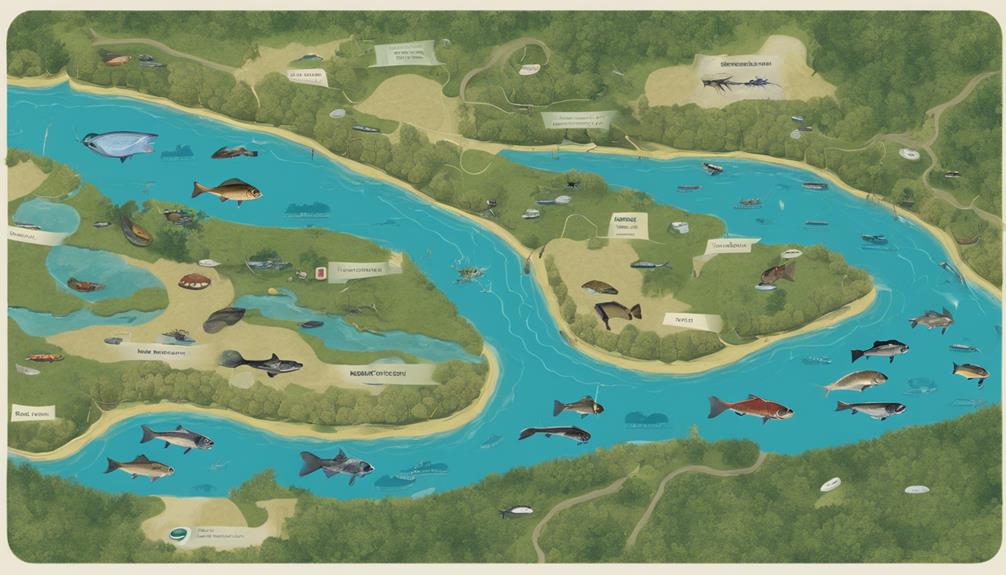
Moving from the intricacies of scoring systems and point structures in fishing tournaments, the influence of local ecosystems plays a significant role in shaping the competitive landscape for anglers. Local adaptations in various species have evolved over time due to the unique ecosystem dynamics present in different regions. These adaptations are crucial for the survival and reproductive success of fish and impact their behavior, feeding habits, and movement patterns.
Ecosystem dynamics, such as water temperature, currents, vegetation, and prey availability, directly influence the distribution and abundance of fish species in a particular area. Anglers participating in fishing tournaments must understand these dynamics to increase their chances of success. For example, knowledge of how certain species respond to changes in water temperature can help anglers target specific areas where these fish are more likely to be found.
Furthermore, local adaptations in fish species can affect their vulnerability to different fishing techniques. For instance, some species may be more attracted to certain types of bait due to their natural feeding preferences developed through local adaptations. Understanding these nuances is essential for anglers looking to optimize their strategies during tournaments and increase their chances of catching the targeted species.
Cultural and Historical Significance
The cultural and historical significance of fishing tournaments is deeply intertwined with the traditions and heritage of communities where these events take place. Fishing tournaments have been a part of cultural traditions in many societies for centuries, serving not just as competitions but as celebrations of community identity and connection to the natural world. These events often reflect historical practices that have been passed down through generations, shaping the way fishing tournaments are organized and valued within different communities.
In some regions, fishing tournaments are rooted in ancient customs that were essential for survival, where fishing wasn't only a means of sustenance but also a symbol of spiritual connection to the environment. As time passed, these cultural traditions evolved into organized tournaments that retained elements of the past while adapting to modern contexts. Understanding the historical practices behind fishing tournaments can offer insights into the values and beliefs of the communities that host these events.
Moreover, fishing tournaments often serve as a way to preserve cultural heritage and pass down traditional knowledge to future generations. By participating in these events, community members not only engage in friendly competition but also keep alive the customs and rituals that have defined their cultural identity for centuries. Overall, the cultural and historical significance of fishing tournaments underscores the deep connection between human societies and the natural world, highlighting the importance of preserving these traditions for years to come.
Frequently Asked Questions
Can One Fishing Tournament Target Multiple Species at Once?
Yes, in some cases, a fishing tournament can target multiple species simultaneously. This can present logistical challenges due to the different behaviors and habitats of each species. Tournament structures may need to be adapted to accommodate the varying requirements for each type of fish.
Organizers must carefully plan to ensure fairness and efficiency in the competition while managing the complexities of targeting multiple species.
How Do Fishing Tournaments Impact the Local Economy?
Fishing tournaments can have a significant impact on the local economy. They bring in tourism, boosting small businesses and supporting the community. Economic growth is often seen through increased spending on accommodations, dining, and local services.
These events not only provide entertainment but also stimulate financial activity in the area. By attracting anglers and spectators, fishing tournaments contribute to the overall prosperity of the region.
What Role Do Sponsors Play in Fishing Tournaments?
Sponsors are crucial in fishing tournaments, playing a pivotal role in providing financial support and resources. They benefit from increased brand exposure, reaching a targeted audience passionate about fishing.
Sponsorship opportunities include logo placement, product showcases, and exclusive marketing rights. By partnering with tournaments, sponsors enhance their visibility and reputation within the fishing community, ultimately driving sales and fostering brand loyalty.
Are There Age Restrictions for Participants in Fishing Tournaments?
Age restrictions in fishing tournaments vary, impacting youth involvement and skill development.
Some tournaments have specific categories for younger participants to encourage their participation and growth in the sport. These divisions often focus on fostering skills and interests in young anglers, creating a supportive environment for learning and competition.
Are There Any Health and Safety Regulations for Fishing Tournaments?
When it comes to fishing tournaments, safety measures are crucial to ensure the well-being of participants and the environment. Regulations often include guidelines on boat capacity, life jackets, and first aid kits.
Additionally, environmental impact assessments are necessary to protect marine life and habitats. These regulations aim to promote responsible angling practices and minimize negative consequences on the ecosystem.
Compliance with these regulations is vital for the sustainability of fishing tournaments.
Conclusion
In conclusion, the varying nature of fishing tournaments by species can be attributed to a multitude of factors, including:
- the importance of target species,
- unique characteristics,
- regulations,
- habitat differences,
- equipment variations,
- scoring systems, and
- local ecosystems.
Each species presents its own set of challenges and opportunities, contributing to the diverse and dynamic world of competitive fishing.
Understanding these differences is essential for anglers to succeed in their pursuit of trophy fish and contribute to the conservation of marine ecosystems.
